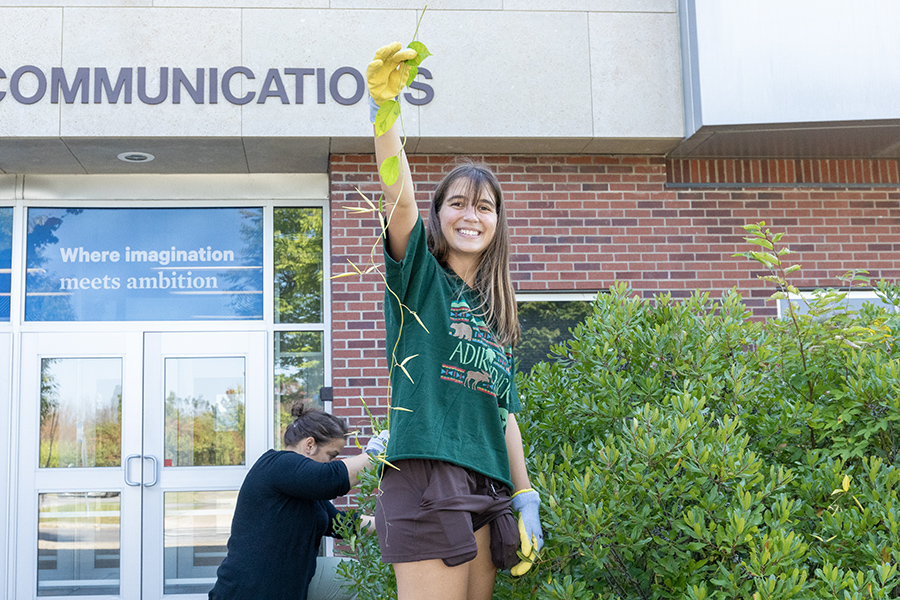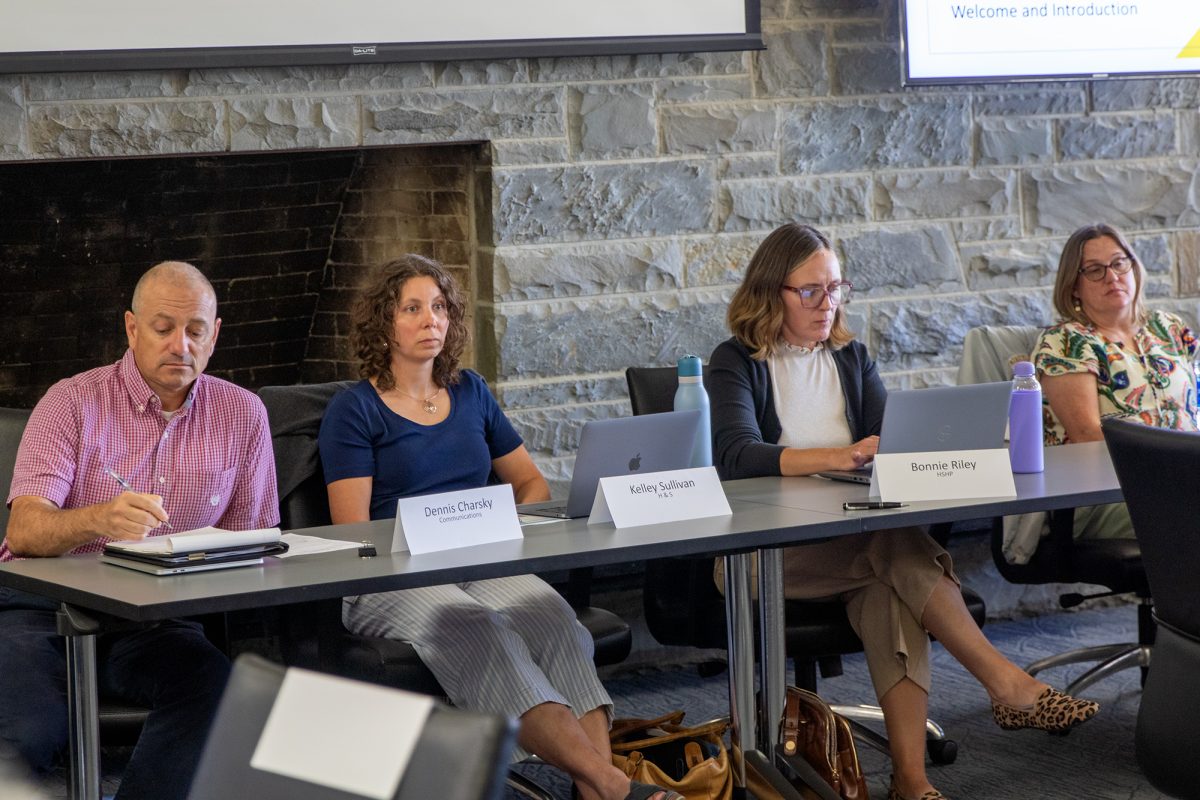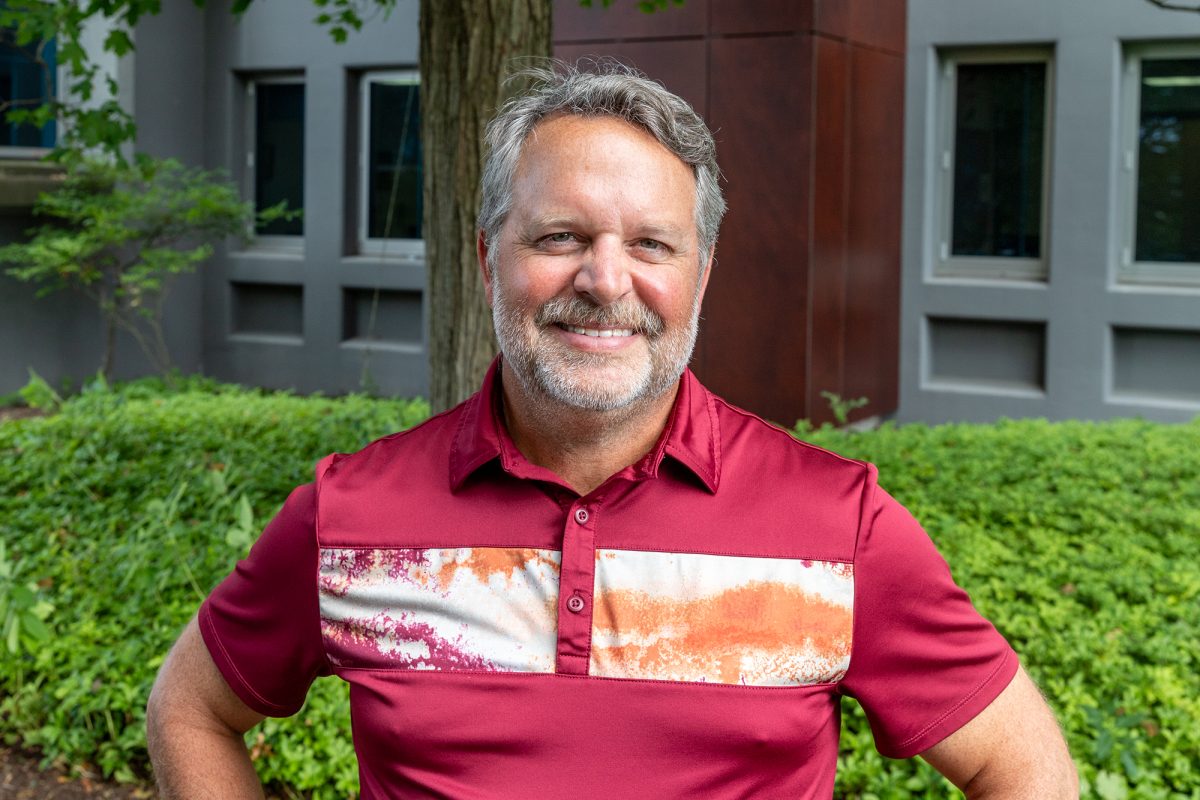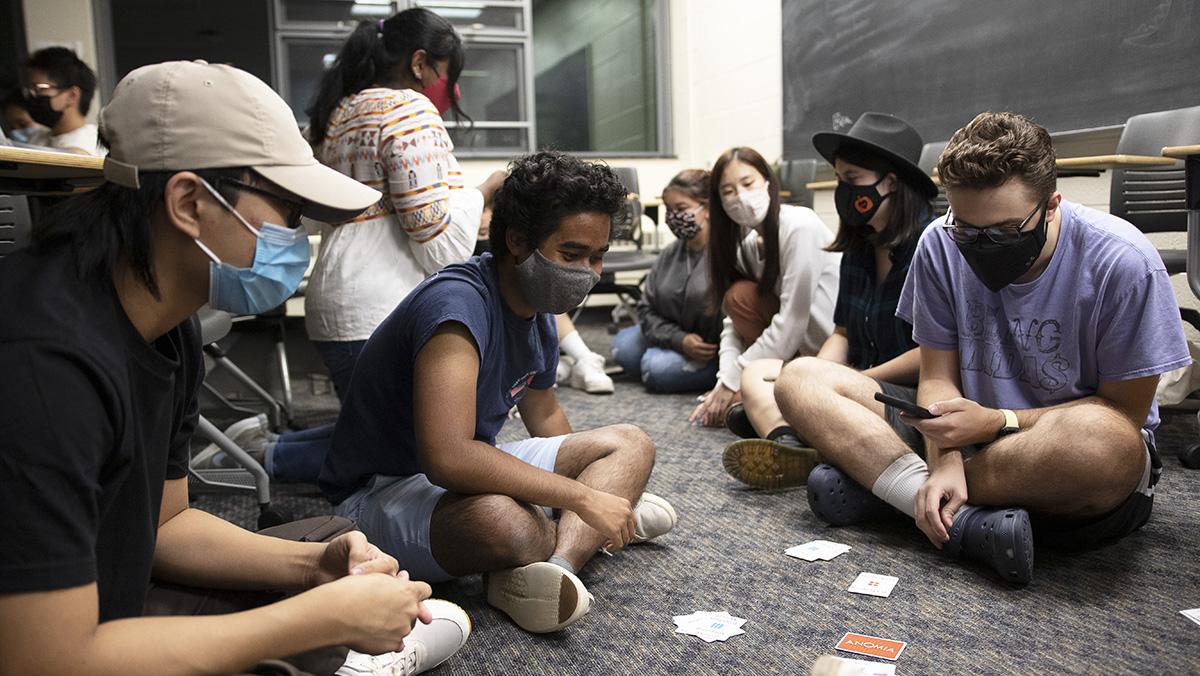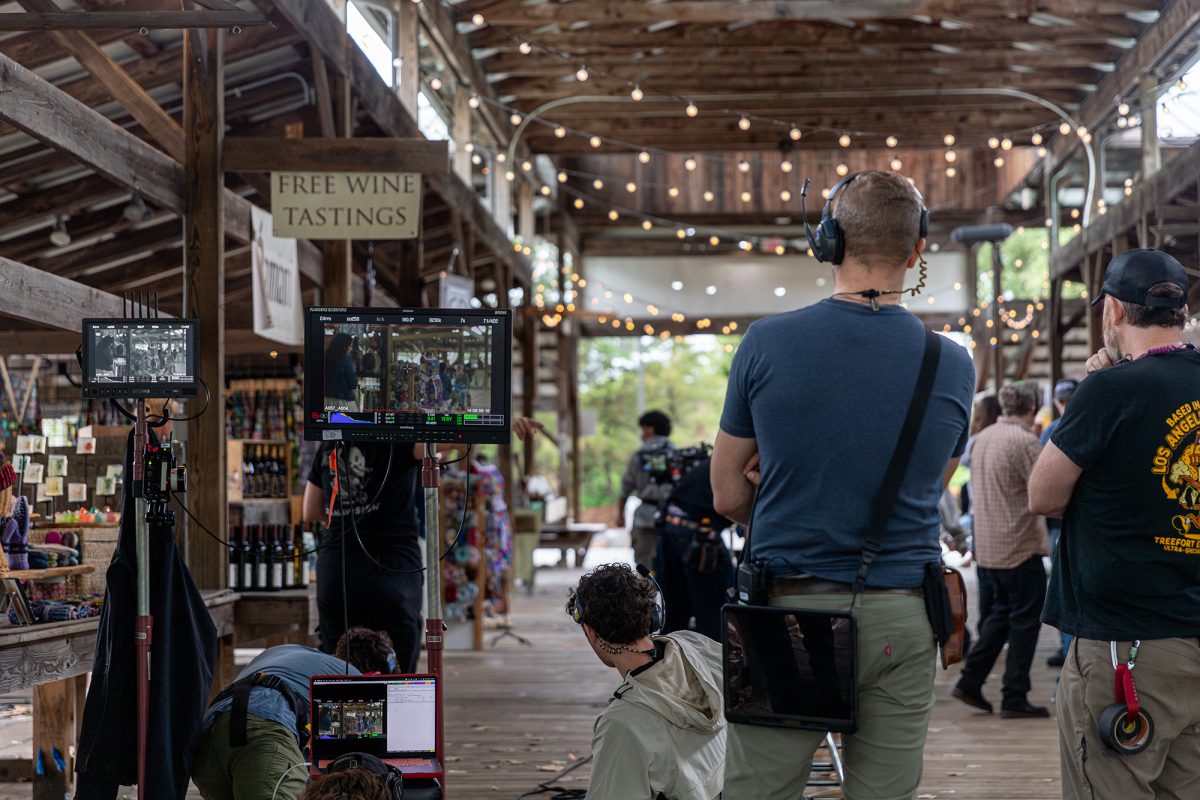Students and staff picked and gathered vines growing in the bushes in front of the Roy H. Park School of Communications parking lot Sept. 16. Some climbed into the bushes to grab the vines of the invasive swallow-wort, a plant harmful to monarch butterflies.
In September, monarch butterflies make their annual migration from North America to their Mexican overwintering sites. However, the swallow-wort plant makes it harder for the insects to make their yearly trek by interfering with monarch butterfly reproduction.
The swallow-wort plant is in the same family as milkweed, which monarch butterflies use to lay their eggs on and which the caterpillars will use as their primary source of food. Monarch butterfly caterpillars eat the milkweed leaves when they hatch, but cannot feed on the swallow-wort plants, according to the U.S. Forest Service.
Marney Lieberman, administrative assistant for the Center for Counseling & Psychological Services and a member of Nature Rx, organized a removal of invasive swallow-wort seed pods to teach students how to properly remove the plant from the soil so they can do it anytime during the semester. Lieberman said it is necessary to remove the plant annually.
“IC doesn’t have a dedicated team of partners to take care of it, unfortunately,” Lieberman said. “So, I do what I can. It’s not a lot. … It’s a very vigorous plant. It’s one of the first plants to come up in the spring.”
The invasive plant is prohibited in New York State and has a Tier 4 abundance according to the Western New York Partnership for Regional Invasive Species Management (PRISM). PRISM indicates the plant can only be locally controlled because of the plant’s widespread abundance, making complete eradication of the plant impossible.
While the plant grows all across campus, Lieberman focused on the plants that grew on the leaves of the bushes outside of the Park school. Lieberman said the plant can also be found in the shrubs outside of Hammond Health Center and all across Lower Quads. The plants use the bushes to grow in more direct sunlight for photosynthesis. The swallow-wort plants can grow under varying conditions, from flooding to drought, and grow on other plants to survive, according to the College of Agriculture, Health and Natural Resources at the University of Connecticut.
Six students joined throughout the noon hour. Ernie McClatchie, associate vice president of the Office of Facilities, supplied the event with bags and gloves.
McClatchie said in an email that Lieberman approached him about the event. He said the task of removing the invasive plant from across campus is hard on the grounds team.
“When I was approached by Marney and Nature RX, I was very quick to accept their assistance, as any action can play a positive role in the control,” McClatchie said. “The grounds team has been fighting the battle for quite some time, as it has invaded areas all around campus.”
Lieberman told each person to dig the plants up by their roots. When the plant is cut above the root, it may cause a denser regrowth and the plant to reflower, according to the University of Connecticut.
The plant can be sprayed with herbicides to be eradicated in small areas. Lieberman said she was an organic farmer before working at the college, and said that spraying should always be the last resort because herbicides are known to leach into ecosystems and contaminate them, according to the U.S. Environmental Protection Agency.
“So, what really needs to happen is they need to get dug up, or IC needs to do some kind of, like, really specific spraying, which I don’t see that happening,” Lieberman said. “The last thing I would want to do is spray, but sometimes it needs to happen.”
As the students and staff picked and dug the plants from the soil, the soft, white seed pods would drop and blow away in the wind. When they drop, the seed pods dry up and split open and release an innumerable amount of seeds, according to PRISM. Lieberman said this is what makes the plants impossible to control.
“Ideally, you want to unwind it gently, so that the pods don’t drop off, because if they drop off, they’ll dry out and then just split open,” Lieberman said. “They spread very easily. They spread by wind.”
Most of the students who attended the event heard about it after planting native trees on campus with an event partnered by Trees Up Tompkins. First-year Rob Wintsch said he helped at the tree planting and said he enjoys chances to help do volunteer work outside in nature.
“I am really interested in volunteer work, community service,” Wintsch said. “It’s really invigorating and it feels really good to be able to come out and help. I’m really grateful for opportunities like this.”
Sybil Conrad, Director of the Campus Center, said she is working with Jake Brenner, Ithaca College Natural Lands reserve manager and professor in the Department of the Environment, to advertise more volunteer opportunities in the natural lands.
“We’re going to try to amplify anything we hear about through the IC engage community service page,” Conrad said. “So anyone who’s interested in making sure they know about things that come together, either with a great deal of planning or something last minute like this, you have the opportunity to see what’s out there.”
Brenner said in an email that students will have the opportunity to volunteer in the college’s natural lands and help with the removal of the invasive exotic Japanese Stiltgrass, cleanout of recurring party sites in the Boothroyd Woods, recovery and recycling of surplus construction material and the planning and execution of a reroute of the East Trail of the natural lands for safety.
“Together the team of student leaders and volunteers will engage with several important projects and learn from students enrolled in the Land Stewardship Program of Ithaca College Natural Lands.”
Lieberman said this is the first seed pod removal of the semester, but may be the last because of the lack of resources available at the college, as well as the overabundance of the invasive plant.
McClatchie said in an email that a major responsibility of the grounds team at the college is dealing with weeds, and said the swallow-wort is one of them. However, despite the work the students and staff did to remove the plants outside of the Park school, Lieberman said their efforts act as a small fix for a greater problem.
“The removal of the seed pods is going to encourage more of these to form underneath, unfortunately, but this is just like a band aid on a bigger process,” Lieberman said.



